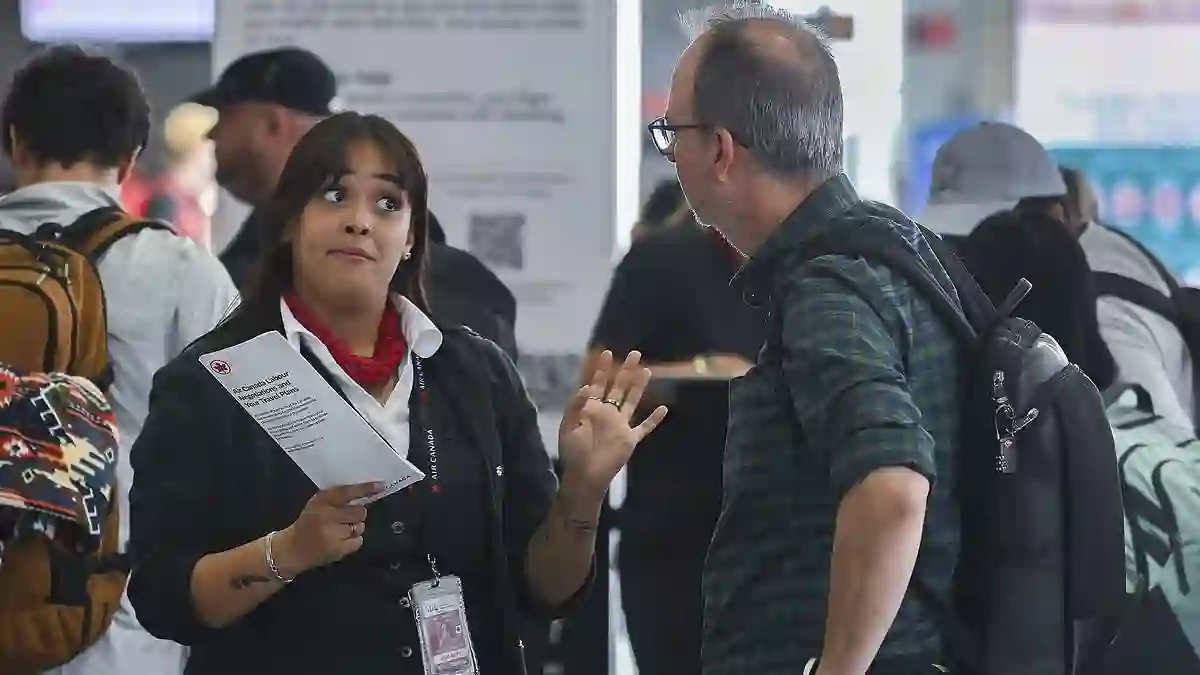What began as another day of bustling travel in Canada quickly turned into a nightmare for passengers as tens of thousands of Air Canada staff walked off the job.
Flight attendants launched a strike that immediately grounded hundreds of flights, leaving travelers stranded across the country.
The airline, Canada’s largest, had no choice but to suspend operations entirely on Saturday as around 10,000 flight attendants staged a walkout over a bitter contract dispute.
The strike threatened to disrupt travel plans for an estimated 130,000 passengers every day.
Government Steps In With Binding Arbitration
Hours into the strike, Canada’s Jobs Minister Patty Hadju intervened, invoking a rare government measure: binding arbitration.
This legal process forces both sides to accept a neutral third party’s final decision.
“The situation reached an impasse,” Hadju explained.
“With massive delays affecting hundreds of travelers and supply chains at risk, the government had to act to maintain stability.”
The arbitration order applied to Air Canada and the Canadian Union of Public Employees (CUPE), representing the striking flight attendants.
Union Pushback Over Government Intervention
CUPE quickly fired back, accusing the government of violating workers’ charter rights.
Wesley Lesosky, President of Air Canada Component of CUPE, said the intervention gave the airline exactly what it wanted: extended hours of unpaid labor from underpaid staff, while executives enjoy large profits.
“The Liberals claim the best place to resolve this is at the bargaining table,” Lesosky added, “yet when we are at that table, they interfere and strip away our right to take job action.”
Widespread Disruptions Across Canada
The strike immediately affected around 500 flights daily, with cancellations and delays spiraling as operations came to a halt.
FlightAware reported that by 10 a.m., more than 13,000 flights had been delayed, and nearly 1,000 were cancelled.
Air Canada advised passengers to stay away from airports while reaffirming its commitment to negotiate a new collective agreement with the union.
However, the airline’s statement drew outrage online, with many accusing it of showing “total disdain” for travelers.
Others, conversely, expressed support for the flight attendants, demanding fair pay.
Standoff Over Contract Terms
The union and Air Canada have been negotiating for eight months but remain far apart on key issues.
The airline recently offered a four-year compensation increase totaling 38 percent, which it claimed would make flight attendants the highest-paid in Canada.
CUPE rejected the offer, arguing that an initial 8 percent raise in the first year was insufficient to keep up with inflation.
The union has also demanded pay for time spent working while planes are on the ground—a core issue in the ongoing dispute.
The Stakes for Travelers and the Airline
As the standoff continues, the Canadian government’s intervention aims to bring both sides back to the bargaining table and prevent further travel chaos.
But with passions running high on both sides, the resolution may not come quickly.
For now, travelers are left facing uncertainty, and Air Canada must navigate one of the most disruptive labor actions in its history.

